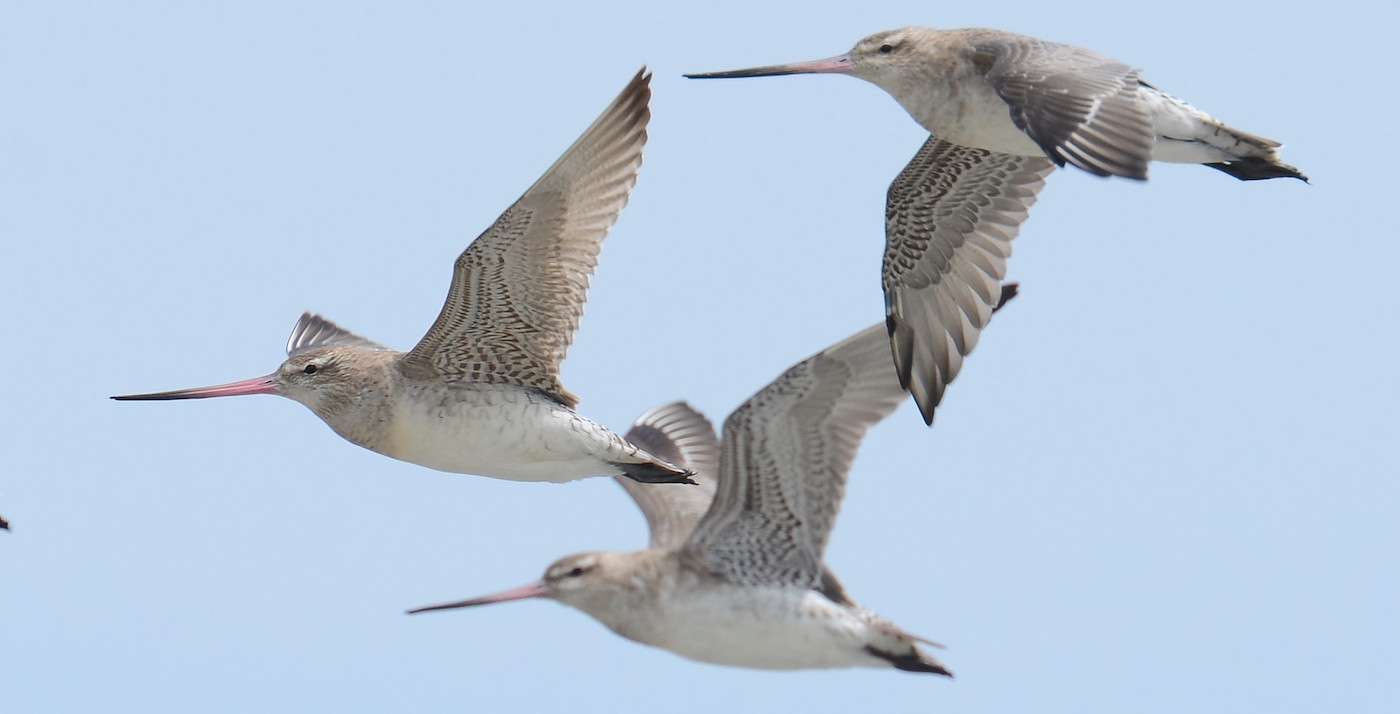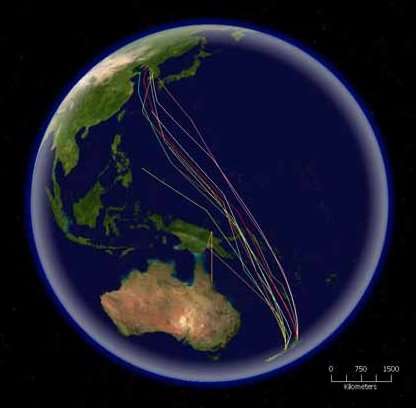A Miracle on 34th Street for Tiny Owl Found Stowed Away in Rockefeller Christmas Tree
A saw-whet owl was discovered hiding in the 2020 Rockefeller Center Christmas tree. Now it's safe and well.

Every time you see a bird, there is a chance you may be looking at the greatest marathon athletes in the world; particularly if you live near mudflats in the U.S. state of Alaska in late-summer, and happen upon a bar-tailed godwit.
These little shorebirds were recently found to travel 7,500 miles (12,000 kilometers) in an eye-watering, lung-busting non-stop flight of 11 days from Alaska to the Firth of Thames near Auckland, New Zealand.
It's not the longest migration ever-that title goes to the Arctic tern which goes from the Arctic to the Antarctic along the west coast of North and South America-or straight down the Atlantic every year for a total of around 14,000 kilometers.
However, it is the longest non-stop flight known to scientists. Unlike the tern, the godwit weighs a much heavier one-fifth to four-fifths of a pound, and relies on a muscular build much like a modern jet, with aerodynamic features like narrow pointed wings and a sleek body to reduce air drag.
Despite these advantages which allow it to flap its wings nearly uninterrupted for the entire journey, how can a small bird that lives a few years navigate for days over nothing but empty ocean to arrive in New Zealand?

Even though we all learned about it in biology class, or by watching David Attenborough-narrated documentaries, there is no scientific consensus over how birds navigate during their long, sometimes solitary migrations.
Some scientists have shown birds use the sun as orientation, but there is also evidence of migration as a learned skill-one study showing that adult raptors were better at course correcting for wind than juveniles, suggesting that experience comes into play.
Another thought is that some birds may use electromagnetic sensory equipment that allows them to ‘see' the magnetic field in a way that humans cannot. A region of the brain called "Cluster N", which together in connection with the eyes, demonstrates substantial neuronal activity during birds' night-time migration.
Even with the help of a magnetic compass, the record-breaking bar-tailed godwit, known as 4 BBRW, departed from Alaska and passed over the Aleutian Islands in a 224-hour flight without sleep over open ocean with no land markers to use as visual guidance. At one point he faced winds that blew so hard he was being blown off course towards Australia. Amazingly, he managed to correct his flight trajectory.
"They seem to have some capability of knowing where they are on the globe. We can't really explain it but they seem to have an onboard map," said Dr Jesse Conklin, from the Global Flyway Network, an international migration monitoring agency, to the Guardian.
"There are other birds that make similar-scale flights of say 10,000km but there are not a whole load of places in the world where it is necessary," Conklin said. "So it is not necessarily that this is the only bird capable of it-but it is the only bird that needs to do it."
Along with having an incredible fuel-to-energy ratio, the birds have the ability to shrink their internal organs. This lightens their bodies to make flying easier.
It's thought the birds' return journey will begin in March, when they will fly north over the Yellow Sea and pass through Liaoning Province of China before returning home to a northerly latitude.
Tweet the Record-Breaking News to the Birders In Your Life…
Be the first to comment